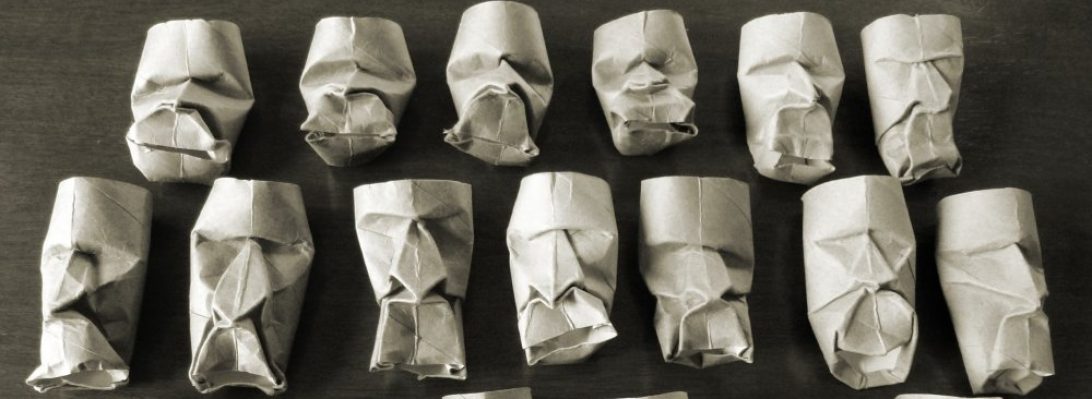I first folded these little critters, designed by Robert J Lang, using a square cut from an A3 printer paper sheet back in 2011 as part of my original 365 project:

Remarkably, even with that terrible paper, all the features of the critter were present however not very refined.

Australians call these “Slaters”, but they also go under the name “wood lice” because these little isopods are found in decaying vegetation – which is why I decided they should be folded from Mango Leaf paper. It makes this fold a bit “meta” in that the critter is folded from mulberry paper that contains leaf litter.

The fold sequence is exacting, forming trapezoidal molecules for each of the 14 legs, along with antennae and a rather beautiful segmented shell. This model appears in a few of Robert’s books, I folded this one from “Origami Insects 2” – a rather splendid volume from Origami House in Japan. bought from Origami-shop (even though, strictly speaking, it is not an INSECT….).
I decided to fold two so we could see one open and one curling up into a little armoured ball – they do this when in danger.

I bought the beautiful paper from Kami in Melbourne, as a full sheet for $7, having previously bought a half sheet locally for $15 – great value, beautiful to fold without treatment.

Shaping has taken an age – I wanted to be subtle, strategic glue spots to hold seams closed and some MC to pose the legs – the model is pretty complete at the end of the well thought out sequence but I added curve to the shell.


This is such a great model and the duo you folded looks amazing. You mention folding sequence, but I couldn’t spot a reference to model, designer or diagram. Would you share these please – would be a fantastic opportunity for our Natural History & Pet clubs. Thank you in advance.
Liliya, This is Robert Lang’s “Pillbug” – I first saw the diagrams for this in the book “Origami Insects and their Kin” by Robert J Lang. They also appear in “Origami Insects 2” (which I also have) also by him, and the design/CP and circle packing is explored in “Origami Design Secrets” – another useful origami reference. It is a fascinating model indeed.